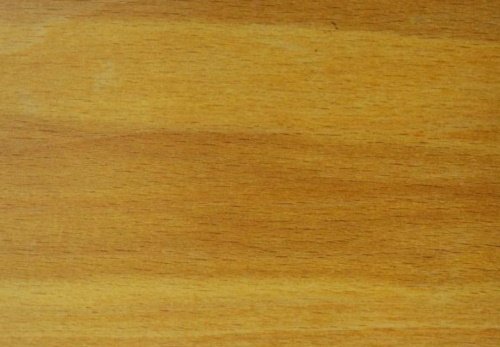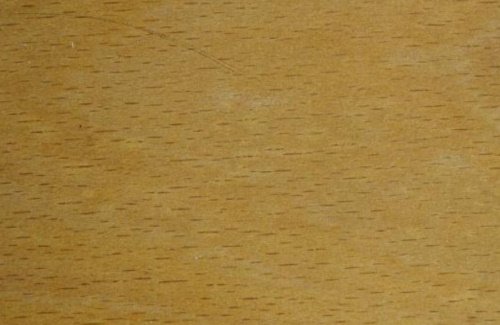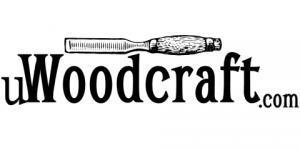Are you trying to identify whether your Beechwood is American or European?
Or perhaps you’re planning a project, want to use beech wood, but aren’t sure which variety is best for that specific project?
The following is a description and comparison of the lumber of American and European Beech which will hopefully help you out!
American Beech
Scientific Name: Fagus grandifolia
Family: Fagaceae
Location: USA and Canada.

Physical Description
The wood is reddish-brown and coarser in quality than European beech. It has distinct rays and tiny pores and is straight-grained with a fine, even texture.
It weighs 740 kg per cubic meter (46 lbs per cubic foot); specific gravity .74.
Construction Properties
American Beech is rated as having excellent wood bending properties; it has high crushing strength, medium stiffness, and resistance to shock loads.
It is comparable in strength to European beech.
Seasoning
American Beech dries fairly quickly and well but with a definite tendency to warp, split and surface check. Much care must be taken during seasoning as it is subject to substantial shrinkage, checks, and discoloration in addition to warping.
Once dry, there is a moderate movement to service.
Woodworking Properties
American Beech works easily with most hand and machine tools, but it has a tendency to bind on the saw and to burn in drilling and crosscutting.
It has good nailing and gluing characteristics and can be stained and polished to a solid finish. It is a superb wood for turnery.
Durability
Liable to attack by common furniture beetle and longhorn beetle.
American Beech is perishable but permeable for preservation treatment.
Common Uses
Cabinetmaking and furniture making, both solid and laminated. Flooring, turnery, brush backs. Vehicle bodies. Interior joinery, cooperage, domestic woodware and handles and veneers.
It is particularly suitable for food containers as it does not impart taste or odor.
Identifying the American Beech Tree
European Beech
Scientific Name: Fagus sylvatica
Family: Fagaceae
Other Names: It is also called English, Danish, French, etc., according to the country of origin.
Location: Throughout central Europe and the UK, also found in West Asia.

Physical Description
The heartwood is a very pale pink-brown. It is a common practice on the European continent to steam the timber which turns it to a reddish-brown tone. Some logs have a dark red kern or darker veining.
European Beech has a straight grain and fine, even texture.
It has an average weight of 720 kg per cubic meter (45 lbs per cubic foot), and a specific gravity of .72.
Construction Properties
Its steam bending properties are exceptionally good, even tolerant of knots as well as irregular grain.
It has moderate stiffness, high crushing strength, and medium resistance to shock loads.
Seasoning
European Beech dries fairly quickly but is classified as moderately refractory, which means it tends to warp, check, split and shrink.
Considerable care is needed in air-drying and kilning to avoid shrinkage. When dry there is a large movement in service.
Woodworking Properties
The ease of working fluctuates with growth conditions and seasoning. Tough or badly dried timber will bind on saws, burn when crosscut, and will be difficult to plane.
Beech offers medium resistance to hand and power tools and has a moderate blunting effect on cutting edges. Pre-boring is necessary for nailing. It glues readily, stains well, and takes an attractive finish.
Durability
European Beech is perishable, subject to attack by common furniture beetle and by death watch beetle in old buildings. Sapwood is affected by longhorn beetle.
The timber is permeable for preservation treatment.
Common Uses
Cabinetmaking, high-class joinery, solid and laminated furniture, desks and workbenches, chairmaking, shoe heels, sportswear, toys, bobbins, woodware, tool handles. Turnery. Musical instruments, domestic flooring, heavy construction, marine piling (when pressure treated). Core stock and utility plywood.
Sliced veneers have an attractive flecked figure on quartered surfaces, and broad rays on longitudinal surfaces, and are used for decorative veneering.
More European beech is used in the United Kingdom than any other hardwood.
Identifying the European Beech Tree
Comparison of Woods
Both beeches are very similar in most qualities. Here is a rundown comparison.
Comparison of Physical Properties
American beech is generally coarser and darker than European. Both have a fine, even texture and a straight grain.
American Beech lumber is slightly heavier than European.
Comparison of Mechanical and Woodworking Properties
Both types of Beech are excellent for bending, have medium stiffness and resistance to shock loads, and high crushing strength.
Both Beeches dry fairly rapidly but also have tendencies toward warping, splitting, checking, and shrinking.
European Beech has a moderately higher movement in service.
European Beech is the superior wood for staining due to its lighter color.
American Beech stays smooth under friction and wears well and is, therefore, more common for flooring.
